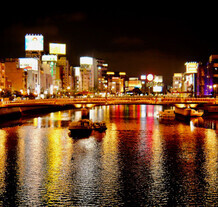请按赞并分享

虽然[拉面](面条)在访问日本的游客中非常受欢迎,但似乎没有多少人真正知道有多少种不同类型的拉面。在本文中,您将找到尽可能多种类拉面的详细介绍!
What Is Ramen?

The History of Ramen

In 1910, the first Japanese noodle restaurant, serving Chinese noodles imbued with Japanese food culture, opened up in Tokyo. From the 1920s until 1937, just before World War II, ramen shops were popping up all over Japan. And after the war many new ramen-selling stalls appeared. It seems that ramen, being not only cheap, but also delicious and nutritious, had been especially popular back when supplies were scarce.
In the 80 years since then, various ramen restaurants have opened up all over the country. Ramen is now called "the national food of Japan."
Standard Types of Ramen
[Shoyu Ramen] and [Miso Ramen]
![[Shoyu Ramen] and [Miso Ramen]](/gg/content_image/t0039_003_20180115010102.jpg)

The soup is made with shoyu. The soup may vary greatly: from a light dashi (broth) made from chicken bone or vegetables to a thick pork bone-based one.
- Miso Ramen
The soup is made using a sauce, flavored with miso, as its base. It is characterized by a thick and dense rich flavor. It is said that the owner of "Aji No Sanpei", a popular ramen restaurant in Sapporo-shi, Hokkaido, invented it in 1961.
[Tonkotsu Ramen] and [Shio Ramen]
![[Tonkotsu Ramen] and [Shio Ramen]](/gg/content_image/t0039_005_20180115020750.jpg)

The soup is made using dashi obtained from the process of boiling pork bones for a long time. It has a distinctive fragrance and thick, rich taste. A lot of [Tonkotsu Ramen] come in a cloudy white soup as represented by the [Hakata Ramen] of Kyushu.
- Shio Ramen
The soup is made from a sauce that is flavoured with salt. Its characteristic feature is that the taste of dashi is very prominent in comparison to other ramen varieties. Popular because it is light and easy to eat.
[Seafood Ramen] and [Tantan-men]
![[Seafood Ramen] and [Tantan-men]](/gg/content_image/t0039_007_20180115020851.jpg)

The soup is made with various seafood, such as dried bonito, kelp, and anchovies. It is characterized by its deep umami (Japanese savory taste).
- Tantanmen
It is said that this noodle dish originates from the Sichuan region in China, and that a Sichuan-born chef adapted it to suit the Japanese palate. In Japan, it’s usually made with a spicy sesame-flavored soup and topped with such things as ground pork seasoned with sweet bean sauce.
Ramen Derivatives


- Tsukemen
The boiled noodles are immersed in water, then placed in a separate bowl to be eaten by first dipping them in tsuke-jiru (thick ramen soup). Sometimes the noodles are heated up again by running them through hot water. Tsuke-jiru has a stronger taste than the usual type of ramen soup. There are restaurants where you can make [Soup Wari], meaning that once you are finished eating the noodles, you add soup such as tonkotsu or chicken bone soup to the Tsuke-jiru and drink it.
- Abura Soba
A small amount of [Soy Sauce-based Thick Sauce and Oil] is put on the bottom of the bowl, with which the noodles should be coated then eaten. Among the ingredients you can find chashu (roasted pork), menma (fermented bamboo shoots), or finely chopped negi (scallions). Sometimes, you may want to include seasonings such as chili oil or vinegar according to your preference.
- Spicy Ramen
Using dashi made from chicken, pork bones and seafood, among others, as a base, the main feature of this type of ramen is the spicy soup flavoured with ingredients such as miso, chili pepper and garlic. Some restaurants let you choose the level of spiciness.
- Creative Ramen
There are plenty of eateries that make their own unique ramen, using ingredients such as Italian-style tomato-flavored soup, seafood like oysters and clams, curry soup, and so on.
Famous Local Ramen Types


- Asahikawa Ramen
The local ramen of Asahikawa-shi in Hokkaido. It generally uses a shoyu-flavored soup with dashi based on pork bones and seafood such as dried anchovies. Since Hokkaido is known for its cold climate, the fat floats on the surface of the soup to keep it heated longer. White chijire-men (curly noodles) are commonly used.
- Sapporo Ramen
The local ramen of Sapporo-shi in Hokkaido. The most common variety of it is garlic-flavored thick miso ramen. Moyashi (bean sprouts) and ground meat fried in lard are commonly used ingredients, and the noodles are usually of the thick chijire-men variety.
- Kitakata Ramen
The local ramen of Kitakata-shi in Fukushima Prefecture. A clear shoyu-based soup with easy-to-ingest seasonings is common, as well as chewy flat chijire-men.
- Tokyo Ramen
Although there are various definitions, the name is generally used to refer to old-school shoyu ramen. The soup is clear, shoyu-flavored, and the noodles are usually curled and have medium thickness. Chashu, menma, nori (seaweed sheets), and white negi are commonly used as ingredients.
- Ramen of the Yokohama Family
The ramen of Yokohama-shi in Kanagawa Prefecture. The most popular variety is made with thick, chewy noodles and a rich-flavored soup owing its taste to the combination of pork bones, chiyu (chicken fat), and shoyu paste. You can often top it with seasonings such as nori, spinach, garlic, ginger, and sesame to your heart's content.
- Kyoto Ramen
Kyoto's ramen boasts exceptional heaviness among the many ramen of Japan. It features a thick soup with rich shoyu taste, gelatinous consistency, or other impressive features. The soup is made with different bases: from pork bones and chicken to vegetables and chicken bones.
- Hakata Ramen
The local ramen of the Hakata area in Fukuoka-shi, Fukuoka Prefecture. It is characterized by a thick soup made with barely anything but pork bones cooked for a long time. There are also many places that add grated garlic and so on. Also famous for its [Kae Dama] (substitute) system that lets you replace the noodles if you want.
- Okinawa Soba
The local ramen of the Okinawa region. The noodles are made from wheat flour, and the soup is salty, using dashi made with pork bones. Sweet-tasting boiled pork belly, negi, and ginger are common additions.
Typical Ingredients & Types of Topping





















